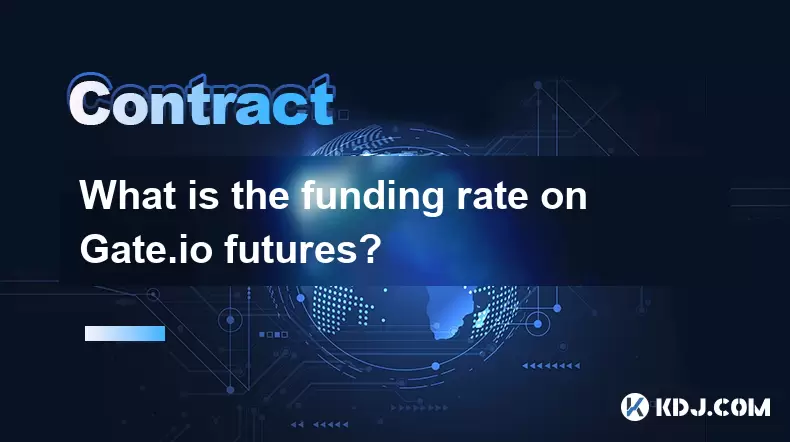-
 Bitcoin
Bitcoin $118300
-0.58% -
 Ethereum
Ethereum $3825
0.11% -
 XRP
XRP $3.137
-0.71% -
 Tether USDt
Tether USDt $0.9999
-0.01% -
 BNB
BNB $803.9
-3.37% -
 Solana
Solana $181.5
-1.94% -
 USDC
USDC $0.9999
0.01% -
 Dogecoin
Dogecoin $0.2238
-2.51% -
 TRON
TRON $0.3358
2.12% -
 Cardano
Cardano $0.7844
-2.16% -
 Hyperliquid
Hyperliquid $43.31
-1.48% -
 Sui
Sui $3.807
-4.04% -
 Stellar
Stellar $0.4203
-1.96% -
 Chainlink
Chainlink $17.79
-3.00% -
 Bitcoin Cash
Bitcoin Cash $567.8
-1.34% -
 Hedera
Hedera $0.2614
-4.30% -
 Avalanche
Avalanche $24.19
-4.46% -
 Litecoin
Litecoin $109.2
-0.74% -
 UNUS SED LEO
UNUS SED LEO $8.969
-0.01% -
 Toncoin
Toncoin $3.404
3.97% -
 Ethena USDe
Ethena USDe $1.001
-0.01% -
 Shiba Inu
Shiba Inu $0.00001307
-3.19% -
 Uniswap
Uniswap $10.33
-1.23% -
 Polkadot
Polkadot $3.884
-4.06% -
 Monero
Monero $312.9
-1.87% -
 Dai
Dai $1.000
0.01% -
 Bitget Token
Bitget Token $4.537
-2.24% -
 Pepe
Pepe $0.00001156
-3.40% -
 Cronos
Cronos $0.1437
-0.89% -
 Aave
Aave $282.8
-2.77%
What is the funding rate on Gate.io futures?
Gate.io's funding rate, updated every 8 hours, helps align futures and spot prices — longs pay shorts if positive, shorts pay longs if negative, with no platform fee involved.
Jul 29, 2025 at 12:01 pm

Understanding Funding Rates in Futures Trading
Futures trading on platforms like Gate.io involves contracts that allow traders to speculate on the future price of assets such as Bitcoin or Ethereum. A key mechanism that keeps these contracts aligned with the spot market price is the funding rate. This rate is a periodic payment exchanged between long and short positions, designed to minimize the price gap between futures and spot markets. On Gate.io, the funding rate is calculated and applied every 8 hours — at 00:00 UTC, 08:00 UTC, and 16:00 UTC. If the rate is positive, longs pay shorts; if negative, shorts pay longs.
How Gate.io Calculates the Funding Rate
Gate.io uses a transparent formula to compute the funding rate, combining two components:
- Interest Rate Component: Reflects the cost of holding the underlying asset versus fiat or stablecoin.
- Premium Index Component: Captures the difference between the futures price and the spot price (also called the "basis").
The final funding rate is:
Funding Rate = Interest Rate + Premium Index
For most pairs, the interest rate is set to 0.01%, but this can vary. The premium index adjusts dynamically based on market conditions. Traders can view the real-time funding rate on the futures trading page under the “Funding Rate” tab. This value updates every minute, helping traders anticipate the next payment.Why Funding Rates Matter to Traders
The funding rate directly impacts your position if you hold it past a funding interval. For example, if you are long and the funding rate is +0.05%, you will pay 0.05% of your position value to short holders every 8 hours. Conversely, if you are short during a negative funding rate like -0.03%, you receive 0.03% from longs. This mechanism prevents excessive price divergence and encourages balanced market participation. Traders often monitor funding rates to avoid holding positions during high positive or negative spikes, which can erode profits or increase losses.How to Check Funding Rate on Gate.io: Step-by-Step Guide
To monitor funding rates on Gate.io before entering or while holding a futures position: - Log in to your Gate.io account and navigate to the Futures section.
- Select the contract you’re interested in (e.g., BTC/USDT).
- Look for the “Funding Rate” box — it displays the current rate as a percentage.
- Click on the “Funding History” tab to see past rates and predict trends.
- Enable funding rate alerts in your notification settings if available — this helps avoid unexpected charges.
- Always check the next funding time displayed next to the rate to plan position exits or entries.
Strategies Based on Funding Rate Behavior
Some traders use funding rates as a sentiment indicator: - High positive funding rates often signal extreme bullishness. This can be a contrarian signal — if longs are paying a lot, a correction might be near.
- Negative funding rates suggest bearish sentiment; shorts are dominant, and longs are being rewarded.
- Arbitrageurs may open both spot and futures positions to capture funding payments without directional exposure — for example, going long spot BTC while shorting BTC futures during high positive funding.
- Day traders avoid holding positions through funding times to prevent unnecessary costs or missed income.
Common Misconceptions About Funding Rates
Many new traders assume funding rates are fees charged by the exchange. This is incorrect — Gate.io does not take any cut of the funding payment. It’s a peer-to-peer transfer between traders. Another myth is that funding rates are unpredictable. In reality, they follow market logic: when futures trade above spot (contango), longs pay shorts; when below (backwardation), shorts pay longs. Understanding this helps traders anticipate the direction of the next funding rate.Frequently Asked Questions
Q: Does Gate.io charge any fee for funding rate payments?
No. Gate.io acts as a facilitator — the entire funding amount is transferred directly between traders. There is no commission or platform fee involved in the funding rate mechanism.Q: Can I avoid funding payments on Gate.io futures?
Yes. Close your position before the next funding timestamp (00:00, 08:00, or 16:00 UTC). If you’re not holding a position at the exact moment the funding is applied, no payment occurs.Q: How often is the funding rate updated on Gate.io?
The displayed rate updates every minute, but the actual payment occurs only every 8 hours. The real-time rate helps traders estimate what the next payment might be.Q: Is the funding rate the same across all futures pairs on Gate.io?
No. Each contract (e.g., BTC/USDT, ETH/USDT) has its own funding rate based on its individual spot-futures price relationship and market demand. Always check the specific rate for the pair you’re trading.
Disclaimer:info@kdj.com
The information provided is not trading advice. kdj.com does not assume any responsibility for any investments made based on the information provided in this article. Cryptocurrencies are highly volatile and it is highly recommended that you invest with caution after thorough research!
If you believe that the content used on this website infringes your copyright, please contact us immediately (info@kdj.com) and we will delete it promptly.
- IPO, Bitcoin, and Treasury: A New Era of Crypto Investment?
- 2025-07-30 14:30:12
- Bitcoin, Binance, and Whales: Decoding the Latest Market Moves
- 2025-07-30 14:50:12
- Sinkhole Rescue: Migrant Workers' Heroism Sparks Fundraising in Tanjong Katong
- 2025-07-30 14:50:12
- Strategy, Bitcoin, and IPOs: A New York Perspective on 2025's Biggest Moves
- 2025-07-30 14:55:11
- TROLL Memecoin Mania: From Online Buzz to Market Reality
- 2025-07-30 14:55:11
- Coinbase, Circle, and the Power of Partnership: A New Era for Crypto?
- 2025-07-30 12:30:12
Related knowledge

Why is my Bitstamp futures position being liquidated?
Jul 23,2025 at 11:08am
Understanding Futures Liquidation on BitstampFutures trading on Bitstamp involves borrowing funds to open leveraged positions, which amplifies both po...

How to report Bitstamp futures for taxes?
Jul 30,2025 at 08:35am
Understanding Bitstamp Futures and Taxable EventsWhen trading Bitstamp futures, it’s essential to recognize that these financial instruments are treat...

Does Bitstamp offer inverse contracts?
Jul 23,2025 at 01:28pm
Understanding Inverse Contracts in Cryptocurrency TradingIn the realm of cryptocurrency derivatives, inverse contracts are a specific type of futures ...

What is the difference between futures and perpetuals on Bitstamp?
Jul 27,2025 at 05:08am
Understanding Futures Contracts on BitstampFutures contracts on Bitstamp are financial derivatives that allow traders to speculate on the future price...

How to find your Bitstamp futures trade history?
Jul 23,2025 at 08:07am
Understanding Bitstamp and Futures Trading AvailabilityAs of the current state of Bitstamp’s service offerings, it is critical to clarify that Bitstam...

Can I use a trailing stop on Bitstamp futures?
Jul 23,2025 at 01:42pm
Understanding Trailing Stops in Cryptocurrency TradingA trailing stop is a dynamic type of stop-loss order that adjusts automatically as the price of ...

Why is my Bitstamp futures position being liquidated?
Jul 23,2025 at 11:08am
Understanding Futures Liquidation on BitstampFutures trading on Bitstamp involves borrowing funds to open leveraged positions, which amplifies both po...

How to report Bitstamp futures for taxes?
Jul 30,2025 at 08:35am
Understanding Bitstamp Futures and Taxable EventsWhen trading Bitstamp futures, it’s essential to recognize that these financial instruments are treat...

Does Bitstamp offer inverse contracts?
Jul 23,2025 at 01:28pm
Understanding Inverse Contracts in Cryptocurrency TradingIn the realm of cryptocurrency derivatives, inverse contracts are a specific type of futures ...

What is the difference between futures and perpetuals on Bitstamp?
Jul 27,2025 at 05:08am
Understanding Futures Contracts on BitstampFutures contracts on Bitstamp are financial derivatives that allow traders to speculate on the future price...

How to find your Bitstamp futures trade history?
Jul 23,2025 at 08:07am
Understanding Bitstamp and Futures Trading AvailabilityAs of the current state of Bitstamp’s service offerings, it is critical to clarify that Bitstam...

Can I use a trailing stop on Bitstamp futures?
Jul 23,2025 at 01:42pm
Understanding Trailing Stops in Cryptocurrency TradingA trailing stop is a dynamic type of stop-loss order that adjusts automatically as the price of ...
See all articles

























































































